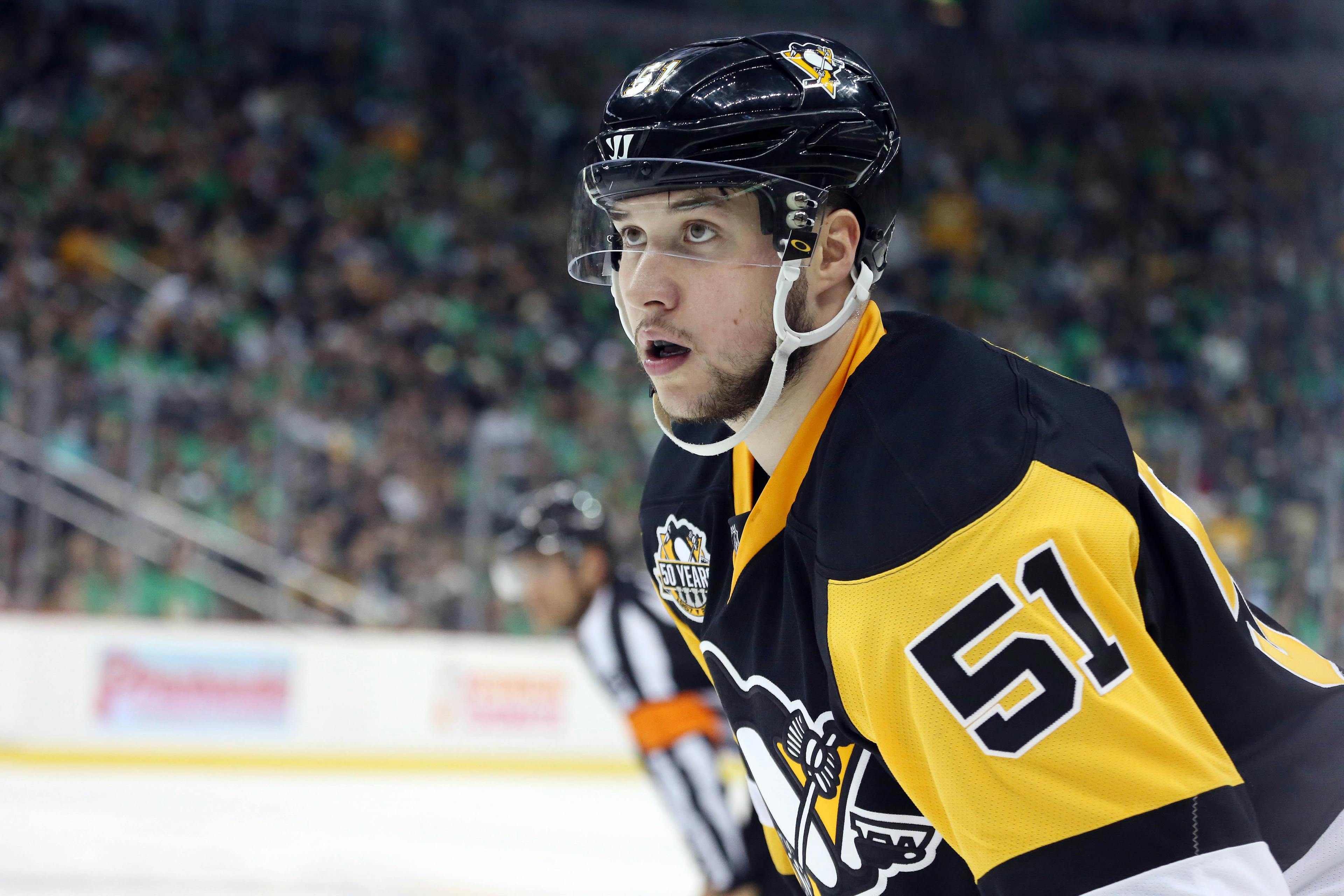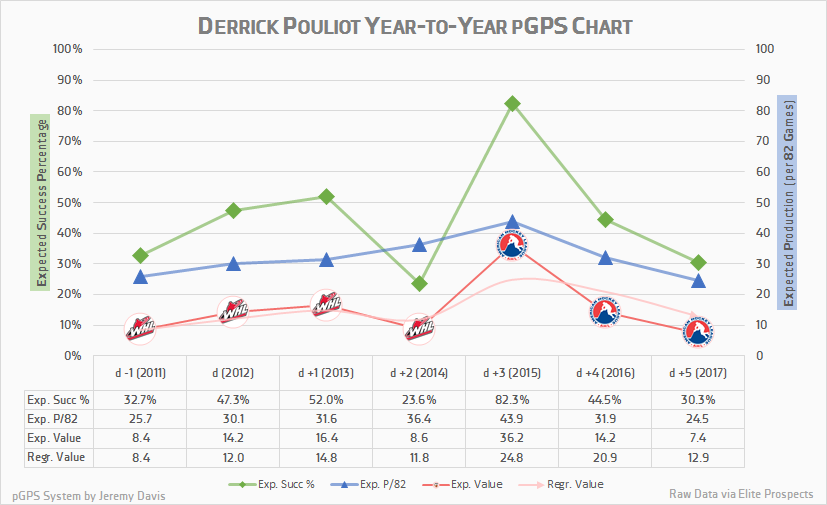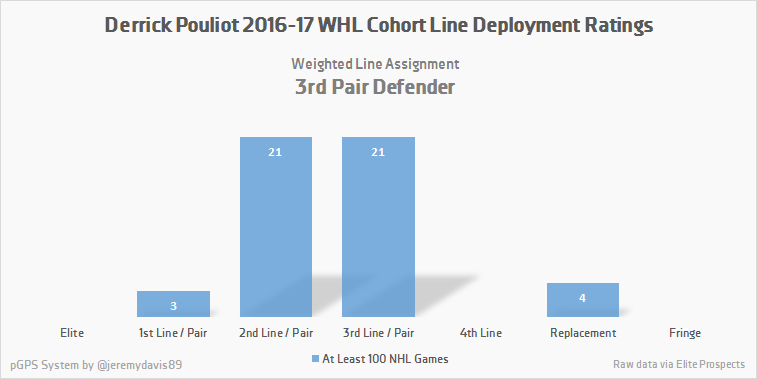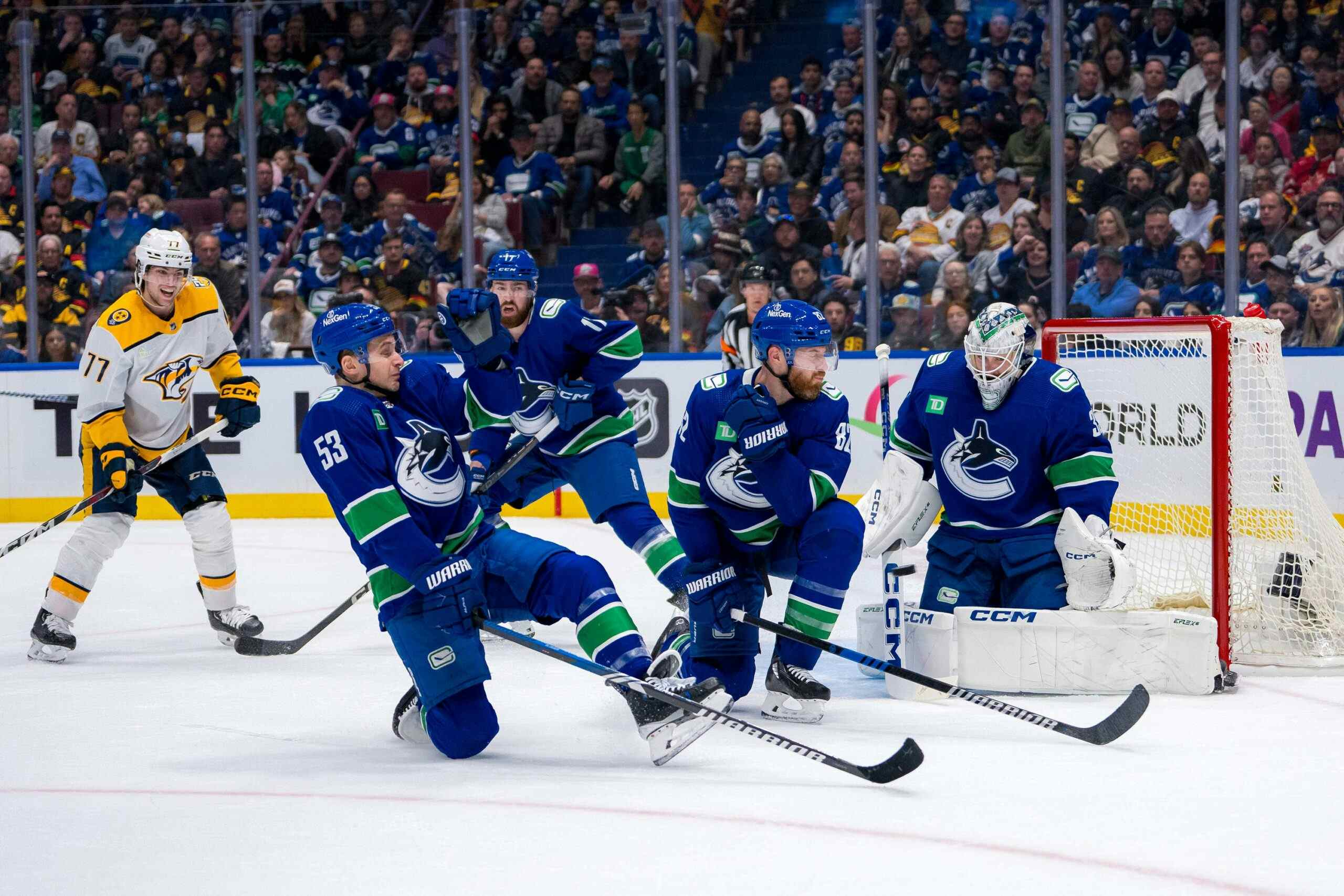First Look: Canucks Gambling on Derrick Pouliot’s Offensive Upside

By J.D. Burke
6 years agoFollowing an unusually quiet off-season on the trade front, the Vancouver Canucks kicked off the 2017-18 campaign with a deal to acquire Pittsburgh Penguins defenceman Derrick Pouliot in exchange for Andrey Pedan and a fourth-round selection.
As far as blockbusters go, I’d hardly say this qualifies. It’s a move in the accelerated development mould, wherein the Canucks forego the heightened uncertainty of a mid-to-late round pick for a player they deem as close to turning the corner and making a near-immediate NHL impact. We’ve seen this many times before, to varying degrees of success. To the Canucks credit, one can count the Sven Baertschi and Markus Granlund acquisitions among their successes. Opposite them, we can look to Linden Vey, Andrey Pedan, Adam Clendening and Emerson Etem as misses.
Here’s hoping Pouliot helps even the score. It’s not an unreasonable expectation, and the price the Canucks paid, a depth defenceman and a mid-round pick, means that any return on investment is a net-value gain. The club had moved on from Pedan, as evidenced by the lanky Lithuanian’s demotion to the Utica Comets mere days prior, and moving him allows them the necessary contract flexibility to make moves on the fly in season. This is, in essence, the exchange of a fourth-round pick for Pouliot.
At a glance, that price may seem needlessly high given Pouliot was destined for waivers, where the Canucks are third in line. Even assuming the risk that one of the Colorado Avalanche or Vegas Golden Knights might snag Pouliot, the waiver wire offered parallel players all weekend. If you can avoid parting with a pick, and a mid-round one at that, that’s always preferable, especially for a team that should be rebuilding like the Canucks.
Canucks general manager Jim Benning wanted Pouliot specifically, though, and they’ve made a point of asserting as much since acquiring the 23-year-old defenceman. And based on one conversation I had earlier, it sounds like there was at least one more team with interest and a willingness to part with a mid-to-late round pick of their own.
As far as the cost goes, parting with a fourth-round pick isn’t the worst possible outcome either. Based on the work by TSN’s Scott Cullen, a fourth-round pick carries a roughly 15% chance of working out, where working out means crossing the hundred game threshold.

Pouliot, a former eighth overall selection, has never crossed below that baseline by pGPS at any point in his career. In fact, the lowest Exp. Success % Pouliot’s ever carried was 23.6% in his draft-plus-two season in the WHL, and I think that number is artificially low based merely on age; he scored 70 points in 58 games as a defenceman, after all. In the season that followed, Pouliot was a dominant AHL defender and a capable NHL defender for 34 games. At 20-years-old, Pouliot was scoring at 0.77 points per game in the AHL; his seven points and sterling underlying metrics at the NHL level were perhaps even more impressive.
With Pouliot on the ice, the Penguins controlled 52.6% of the shot attempts at five-on-five. Pouliot’s 0.44% Corsi Rel. suggests that the Penguins were better at controlling shot attempts, if only barely, with him on the ice. In Pouliot’s following season, he matched his NHL point production in ten fewer games, and his underlying metrics rose to new heights. Pouliot’s Penguins controlled an obscene 58.5% of shot attempts at five-on-five; his Corsi Rel. improved, too, to a tune of 6.91%.
Perhaps most interesting of all is that Pouliot’s progression seems to actually coincide with the Penguins introduction of Mike Sullivan as their head coach. He wasn’t always in the coach’s doghouse, apparently, though I can’t decide whether that’s for the better or worse. Last season, any goodwill he’d built the year prior evaporated. Pouliot lost his NHL job to Chad Ruhwedel (wouldn’t be the last time, evidently) and spent almost the entire year with the Penguins AHL affiliate, the Wilkes-Barre Scranton Penguins. Pouliot appeared in just 11 NHL games last season, and it’s not hard to see why he’d lost the trust of the coaching staff. Pouliot’s always been a high-risk, high-reward defender, but last season he could neither score nor keep his head above water at even strength. Even in the AHL, Pouliot’s point-per-game output had dropped from the 0.77 mark of his rookie season to 0.5.

That decline in time is even more pronounced through Pouliot’s pGPS. In his AHL rookie season, Pouliot had an Exp. Success rate of 82.3%, whereas his output from last season checks out as 30.3%. One scout I spoke with suggested, though, that all Pouliot has to do is become an average defender at even strength, and at that point, he’ll be an NHL capable third pairing defenceman with power play chops.

Time is running out though. Pouliot is 23-years-old (turns 24 in January) and, generally speaking, if you haven’t made it to the NHL by now, it’s not terribly likely that you ever will. Contrary to Benning’s assertion that you don’t know what you have with defencemen until they turn 25, most of the research done in the public sphere indicates that defenceman hit their peak years in the 23-to-24 range and steadily decline in ability thereafter.
Even assuming Pouliot can develop into a third pairing defender, I can’t help but ask why a rebuilding team like the Canucks would pay for the privilege? The player I just described passes on waivers multiple times a season and is available in free agency for nought but the cost of a contract every summer.
Upside is key, though. That’s a lot harder to find. If the Canucks can mine any from Pouliot, and all it costs is a fourth-round pick and an AHL defenceman, we’ll be wondering how they ever pulled it off.
Recent articles from J.D. Burke





